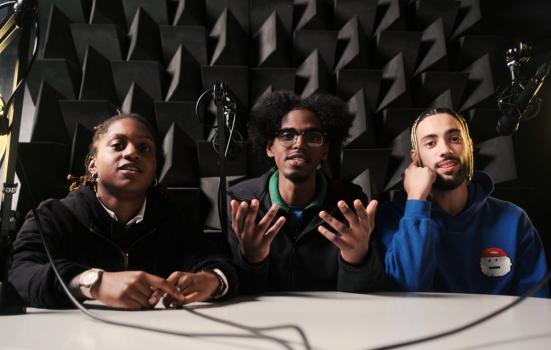Lois Stonock planned the London Borough of Culture 2020 to respond to Brexit. Then Brent became home to one of the UK’s first coronavirus fatalities.

VENT - Brent 2020 London Borough of Culture
Brent 2020, the London Borough of Culture, set out to be a stage for all our communities. It centred on a wide idea of culture: what it signifies, what it includes and what it means to be part of a place – to be part of this place.
Brent is where migrant workers united on the Grunwick strike, where teachers campaigned for more inclusive practices and where the Irish gathered to rebuild London. We shaped our programme around a borough that would feel Brexit as hard as anywhere. We wanted to show what a borough made by migration could do.
Three months into our programme, Brent became the first place in the UK to be struck by the coronavirus. Brent 2020 became a year of reorientation at a time that was profoundly disorienting. Then the death of George Floyd mobilised a movement that rightly demanded change, bringing our communities together to demand more. The year exposed the inequalities deeply rooted in our society and in Brent they were laid open for all to see.
Out of the gate
Our year was designed to be porous, fluid and responsive. By June, the context of Brexit had slipped away, replaced by collective anxiety about health, inequalities, structural racism, and jobs. We believed that by being a megaphone for our artists, citizens and communities, amplifying the conversations they wanted to have, our programme could help people play a role in Brent’s recovery and ensure the survival of artists and cultural organisations into 2021. We developed a small grants programme to support artists in the borough. Our VENT podcast in partnership with Vice gave young people a platform to discuss what mattered to them, including exploring conspiracy theories around Covid-19, reaching 8.5 million people worldwide. No Bass Like Home, our celebration of reggae and Black British music, reached 71,000 people over a seven-hour online show. We reshaped our visual arts programme to deliver London’s first Biennial – the Brent Biennial. Despite taking place between lockdowns more than 800,000 people saw artworks on the streets, libraries and public spaces of Brent.
Covid meant our year never got out of the starting gate on the events side – our opening event RISE was the only one where people could gather - but our programme was bigger than that. Brent 2020 was underpinned by people taking part at all levels. We had partnerships, steering groups, workshops, conversations, teas and coffees. There were 2012 artists, 256 volunteers, 99 grant recipients, 68 educators, 41 community advisors, 13 trustees and more than 100 organisations. These and many others supported us to shape, drive and deliver projects amid the shifting sands of 2020. They made Brent’s cultural life visible and have shown its cultural power not only to itself, but to London, the UK and the world.
Building a legacy
Victoria Bissett and Michael Howcroft’s recent article for Arts Professional explained the core challenge of working on a city wide (or borough wide) programme - how do you move beyond the spin? The Borough of Culture has catalysed change in Brent; it is the first strategic investment into culture here. Place-based programmes take time. They need space for risk and failure, which isn’t always compatible with public relations.
From the outset we knew what Brent needed most was time and infrastructure, visibility for our underrepresented communities and opportunity for learning. Brent had more time than Waltham Forest, but even so building the audience, programme and relationships was a challenge. Add on complex governance structures (necessary for all partners with an investment of this scale) and the public spotlight that comes from being London Borough of Culture and you can sometimes find yourself facing barriers to honest conversations with the community. As Michael and Victoria say, the lowest moments erode trust. Our programme had a bold vision to utilise the title, visibility and investment. We would use the year to work with our communities and think about what culture means to Brent. Then we would use those experiences to shape new approaches to culture in the borough.
A borough of 300,000 of the most diverse Londoners, Brent has long received one of the lowest levels of investment from Arts Council England. The pandemic underlined how our communities have systematically been overlooked for generations so ensuring a legacy for the year was always at the heart of our thinking. Like other year-long festivals, we established a charity. Metroland Cultures and its trustees, a group of Brent residents and stakeholders, have journeyed with us, learning, and feeding that learning back to their organisations. Metroland Trustees will carry a small part of the legacy of Brent 2020 by continuing the Biennial and through their work with young people in the coming years.
Brent Council has provided £1m for this work, are building on a free studio space programme and investing in a local cultural education partnership. The Blueprint Collective, a crucial tenet of the Brent 2020 programme, is establishing itself as an independent youth organisation. Each of the other Brent 2020 projects will be owned and built on by different partners in the borough. For us this feels right – by taking forward a small share of the legacy, we as a community own it together.
Lois Stonock was Artistic Director of Brent 2020, London Borough of Culture and is currently Interim Director of Metroland Cultures




